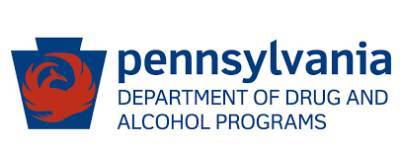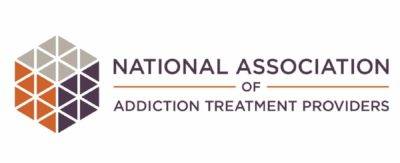Understanding the Pennsylvania Meth Addiction Problem
![]() | 4.9 Google Reviews
| 4.9 Google Reviews
![]() | 4.9 Google Reviews
| 4.9 Google Reviews
Peace Valley Recovery is located in Bucks County, Pennsylvania. Our mission is to provide patient-centered care that focuses on healing and recovery from addiction. This blog provides information, news, and uplifting content to help people in their recovery journey.
The opioid epidemic has been a serious problem in Pennsylvania for years but now another drug is joining its ranks and on the rise. A growing meth addiction problem in Pennsylvania is plaguing the state alongside the existing opioid problem. The drug that was once a rare sight has now spread throughout the state.
“Today, I could see it every day,” said Chief Jerry Speziale of the Hazleton police force. Before 2019, he said he could likely count the number of times he saw methamphetamine in over three decades on a single hand. Physicians, law enforcement, and outreach workers alike see the shifting trends in use.
Depressants remain the drug of choice for most users in Pennsylvania. Though it hasn’t replaced the pull of opioids, methamphetamine is still widely available across the state but hasn’t replaced the pull of opioids, either. Since 65% of drug overdose deaths in 2018 involved opioids, it might seem like the meth problem in Pennsylvania isn’t as pressing.
Unfortunately, that’s not the case.
Meth use in the state seems to be following the same upward trend as opioids. Drug abuse of any kind is a cause for concern and meth is no different. How severe is the meth use problem among residents, though? What can be done to treat the Pennsylvania meth addiction problem?
Pennsylvania Meth Addiction: A Growing Problem
Methamphetamine is usually associated with Midwestern or West coast states. Opioids tend to be the preferred substance among Eastern states. Despite the regional preference for opiates, though, meth use in Pennsylvania is rising. As Chief Speziale explained, the drug is making its way across the state.
There are still unanswered questions surrounding the sudden shift in drug use, though. Officials speculate that the high rates of opioid-related fatalities may cause some users to switch to meth. Other users seek it out because they prefer mixing meth with other drugs, especially downers like opiates.
At the same time, Mexico-based drug operations are also expanding their reach and bringing methamphetamine into Pennsylvania. Meth addiction rates have grown in conjunction with the spread of cartel-supplied drugs. Eastern counties like Lancaster County and Luzerne County showed the first spikes in meth use before it spread west.
Sam Sanguedolce, First Assistant District Attorney for Luzerne County has another idea. He’s seen the uptick in use among residents in the county he oversees. Sanguedolce speculates that the legal crackdown on fentanyl and carfentanil trafficking might have encouraged the switch.

Addiction advocate Marty Henehan also points out that addicts don’t have to use their drug of choice. Oftentimes addicts use whatever substance is available whether or not it’s their first choice. They’re usually looking for something to make their brain feel different, whatever that substance might be.
Meth Addiction Statistics
The data doesn’t lie and a range of research and meth addiction statistics reflect what Chief Speziale observed. Last March, the U.S. Drug Enforcement Administration released a report that revealed multiple discoveries. First, at the national level, methamphetamine was the drug identified most frequently among federal and local forensic labs. Between 2010 and 2017, drug reports for methamphetamine in Pennsylvania shot up 880%.
Overdose deaths involving methamphetamine in Pennsylvania doubled between 2016 and 2017. Rates stayed steady the following year and continued into 2019. OverdosefreePA tracks drug overdoses throughout the state of Pennsylvania. According to their data, autopsy reports revealed the presence of meth in 8% of overdose deaths in Luzerne County in 2018. The following year, 5 of the 34 overdoses in Lackawanna County involved the drug.

The medical director at Temple University Episcopal Hospital’s crisis response center also sees the results of rising meth use. About 55 of 1,000 patients treated each month tested positive for methamphetamine in 2019. Though the number seems small at first, that’s a 33% increase compared to the previous year.
Prevention Point, a public health organization in Kensington, has a similar experience. Associate director Silvana Mazzella said 3% to 4% of supplied drug tests revealed the presence of meth five years ago. Then in 2019, 19% of the tests turned up positive for meth.
At the same time, meth often isn’t the only drug present. 34% of people seeking treatment for opioids in 2017 admitted using meth in the past month. That’s an 82% increase compared to 2011. More than 70% of the overdose deaths involving methamphetamine in 2017 and 2018 also revealed the presence of fentanyl.
Mixing substances is more common today than it was in previous years. This makes meth addiction in Pennsylvania more dangerous than it seems. Combining drugs is more likely to cause dangerous reactions, especially when users combine meth and opioids.
Meth-Laced Substances
While some users mix methamphetamine with opiates, there’s also the problem of users ingesting substances laced with the drug. Sometimes it’s not the users combining drugs but the manufacturers and suppliers of those substances.

Mazzella explained that many clients who come to Prevention Point don’t consider themselves meth users. They usually come in for opioid treatment and are surprised to find they test positive for methamphetamine. The same is true for other drugs like cocaine. 5% of clients at Prevention Point claim cocaine as their drug of choice but up to 41% test positive for it.
The trouble with laced substances is people using cross-contaminated drugs without realizing it. They assume they’re using a certain drug when, in reality, they’re using a combination of substances. This is one of the biggest contributors to the high overdose rates; users don’t know they’re ingesting an unexpected substance until it’s too late.
More About Methamphetamine
Methamphetamine is a powerful stimulant drug that affects a user’s central nervous system. It was originally derived from amphetamine and used in inhalers and nasal decongestants. Methamphetamine is a far more potent drug than amphetamine, though. The brain absorbs far more of the drug when taken at similar doses. This causes more intense and longer-lasting effects.
The primary effects of meth are increased activity, energy levels, and talkativeness. It also causes a pleasurable feeling of euphoria and an overall sense of well-being. Since meth is a stronger drug than other stimulants, such as cocaine, its effects typically last longer. Short-term effects of meth include:
- Hyperactivity
- Increased attentiveness
- Decreased fatigue
- Inability to sleep
- Sudden “rush” of euphoria
- Decreased appetite
- Irregular heartbeat
- Faster breathing
Why is Meth So Addictive?
Dopamine, known as the “feel-good” neurotransmitter, is usually released in small amounts when doing enjoyable things. Eating, listening to music, or playing games releases little amounts of dopamine at a time.
Meth use releases an incredible amount of dopamine in the brain’s pleasure reward circuit at once. The person’s brain quickly learns that using methamphetamine causes a fast rush of those good feelings. It instills the understanding that using the drug leads to feeling good and quickly traps people in the cycle of addiction.

Since the high doesn’t last, though, people often use meth in “binges” to avoid the comedown. They stay up for days at a time, using the drug every few hours to keep their high going. Eventually, the user crashes, though, and they come down hard. Depleted dopamine levels lead to low energy, fatigue, and feelings of depression.
Finding Help for Meth Addiction
Once a user is trapped in this binge and crash cycle, it’s difficult to escape. They get high to avoid the terrible feelings of exhaustion and depression that follow the crash. The only way to prevent relapse and end the cycle is to quit using meth completely. It’s difficult for users to quit on their own, though. Many times they need outside help to put an end to their addiction. Two of the most common approaches to overcoming meth addiction include treatment and recovery support meetings.
Treatment
Addiction treatment is the first step in overcoming methamphetamine addiction. Treatment programs separate people from all substances and educate them on the long-term effects of substance use. They offer therapy, teach coping skills, and show newly-sober individuals how to live a drug-free life.
There are a few types of treatment programs available depending on the person’s needs. Inpatient rehab offers structure and support around the clock. Partial hospitalization programs provide full-time care while letting patients live at home. Intensive outpatient programs are the most flexible option, allowing those with even the busiest schedules to attend treatment.
Recovery Support Meetings
Recovery support meetings serve as an excellent way to maintain active recovery. Narcotics Anonymous and SMART Recovery are two of the most common recovery support programs. They consist of people who escaped the cycle of addiction and now live life without turning to drugs. Each program has a unique approach to achieve the same goal: staying drug-free.
Meth Addiction Treatment in Pennsylvania
Meth addiction treatment in Pennsylvania is a crucial aspect of slowing the addiction epidemic. If people don’t have a way to overcome their addiction they’ll remain trapped in the cycle. Addiction treatment offers a way out.
Peace Valley Recovery is the premier meth addiction treatment facility in Pennsylvania. We provide a comprehensive approach to care in tranquil Doylestown, PA. If you or a loved one need assistance, fill out our insurance verification form or reach out today. We’re here to answer any questions you have and connect you with the help you need.
Sources:
- The Citizens’ Voice: https://www.citizensvoice.com/news/opioid-crisis-gives-rise-to-new-drug-of-choice-meth/article_f0fc22d3-3f30-5789-8741-7929b7629e63.html
- National Institute on Drug Abuse: https://www.drugabuse.gov/drug-topics/opioids/opioid-summaries-by-state/pennsylvania-opioid-involved-deaths-related-harms
- Pittsburgh Post-Gazette: https://www.post-gazette.com/local/region/2018/12/27/Crystal-meth-continues-to-be-a-problem-in-rural-Pennsylvania/stories/201812260133
- The Philadelphia Inquirer: https://www.inquirer.com/health/opioid-addiction/philadelphia-pennsylvania-meth-cocaine-stimulant-use-rising-20191001.html
- National Institute on Drug Abuse: https://www.drugabuse.gov/publications/research-reports/methamphetamine/how-methamphetamine-different-other-stimulants-such-cocaine
- National Institute on Drug Abuse: https://www.drugabuse.gov/publications/research-reports/methamphetamine/what-are-immediate-short-term-effects-methamphetamine-misuse
- National institute on Drug Abuse: https://www.drugabuse.gov/publications/research-reports/methamphetamine/how-methamphetamine-misused
You May Also Like to Read
The Opioid Crisis in Pennsylvania
The Opioid Crisis in Pennsylvania: Trends, Challenges, and Solutions Authored by Chris Schumacher, | Medically Reviewed by [...]
10 Famous Celebrity Heroin Addiction
10 Celebrities Who Overcame Heroin Addiction Celebrity or famous heroin addicts go through the same [...]
How Drug Addiction Affects the Entire Family
How Drug Addiction Affects the Entire Family Addiction affects the family. It’s easy to think of [...]








